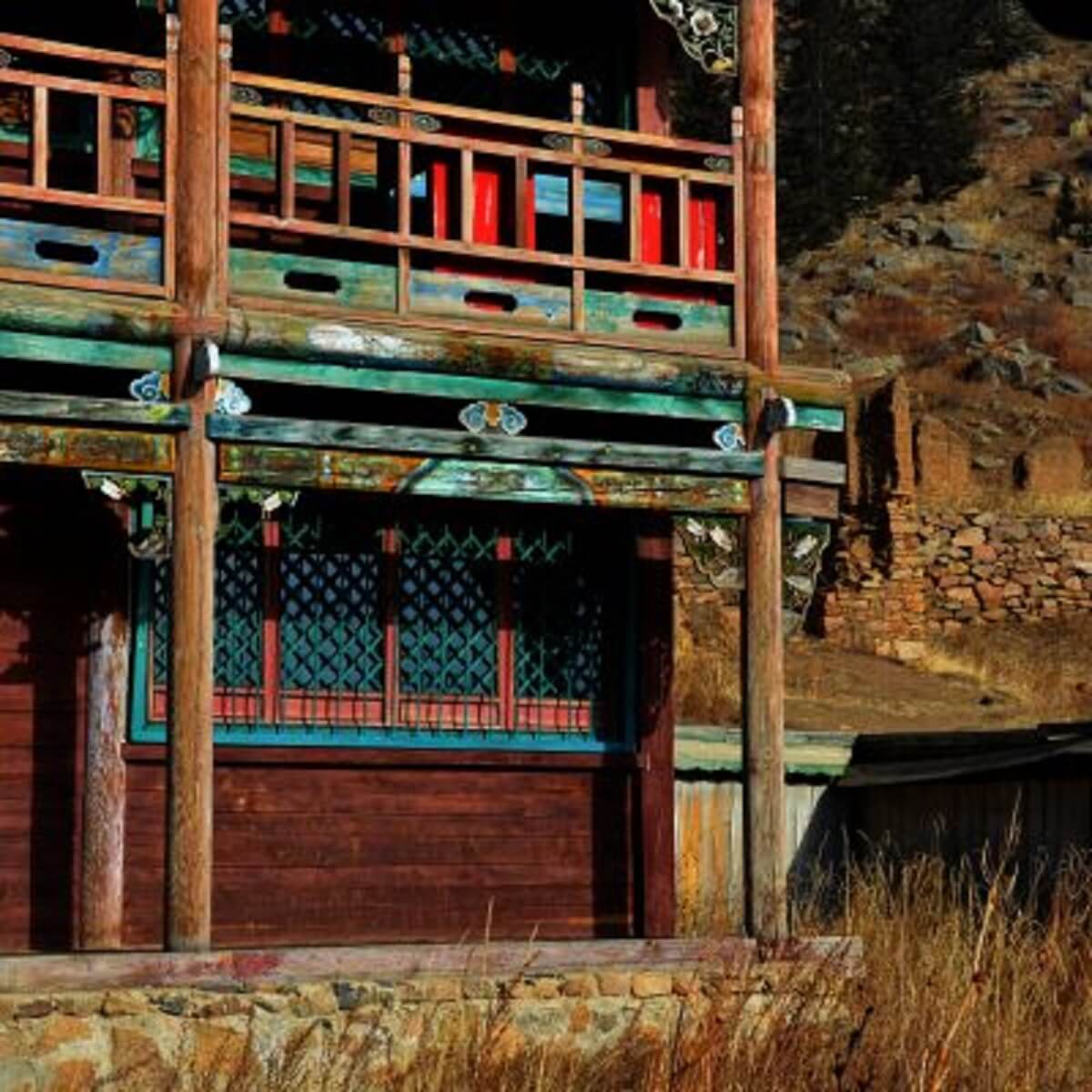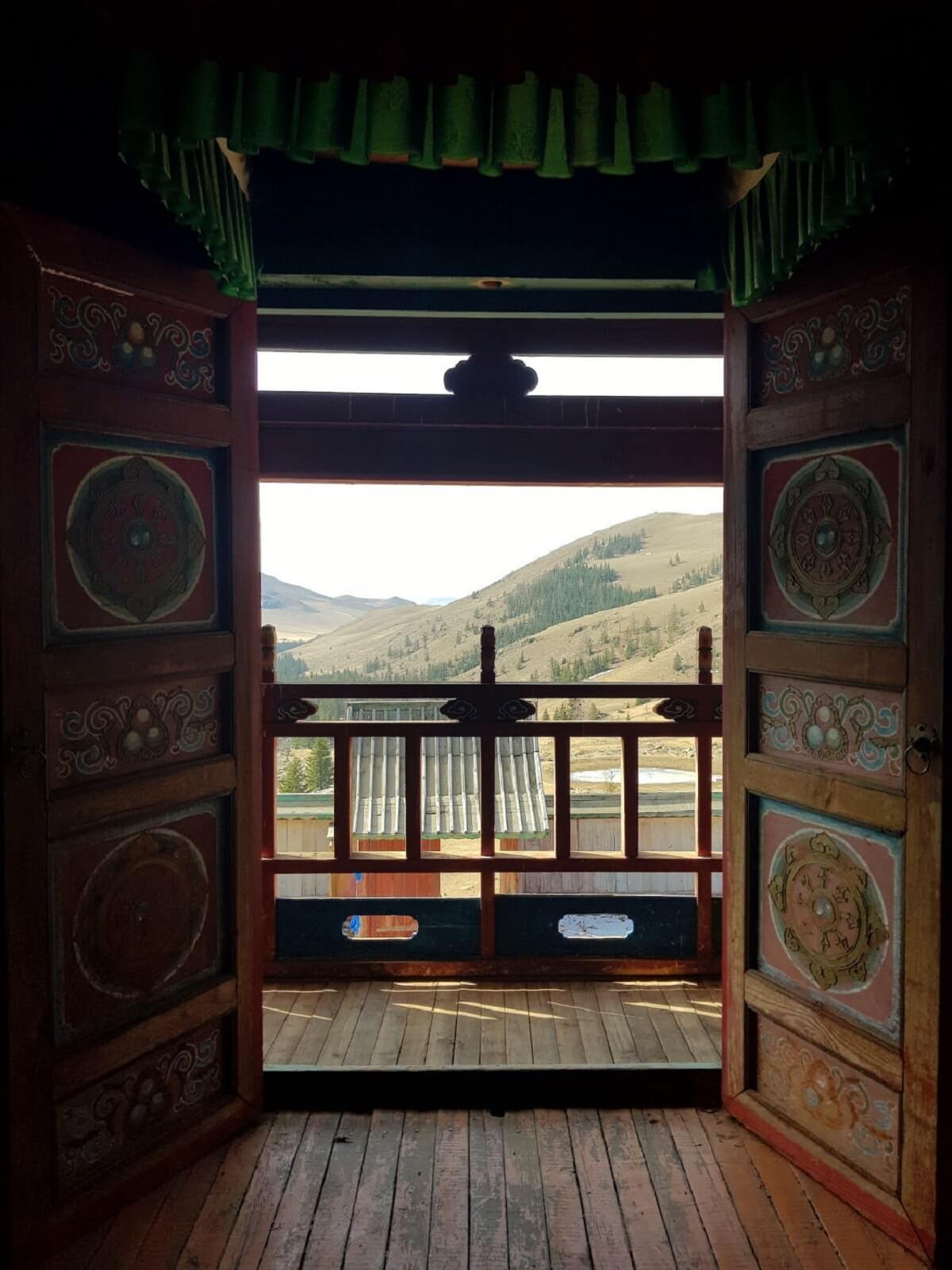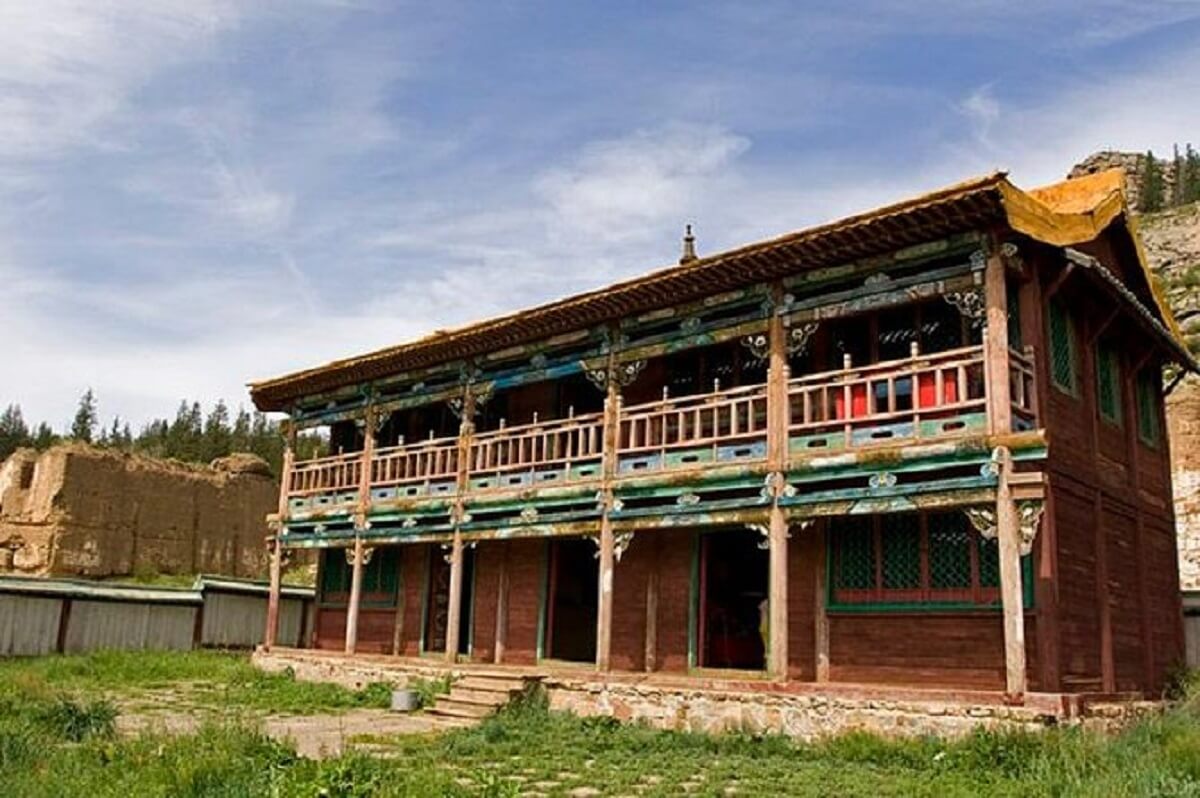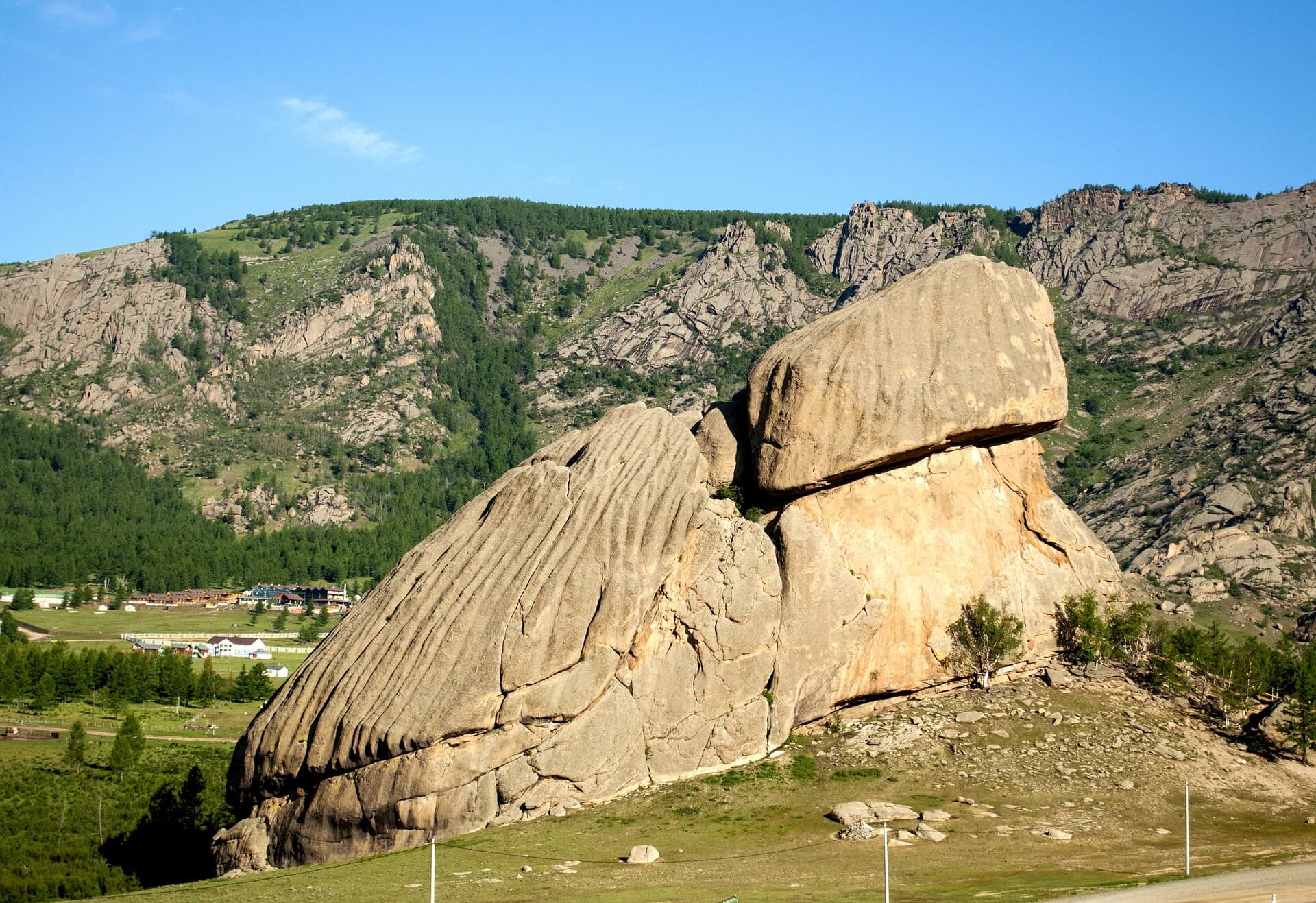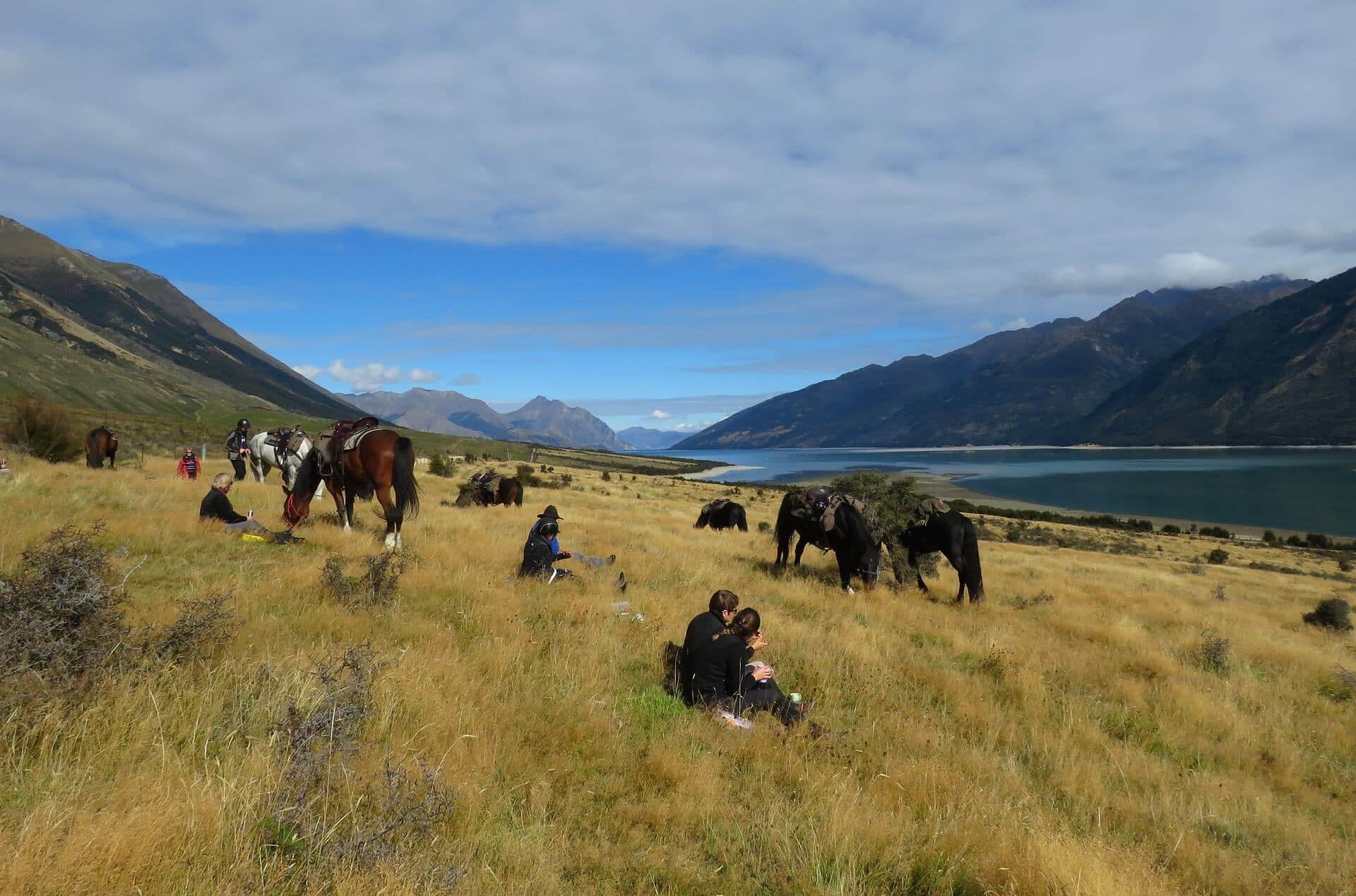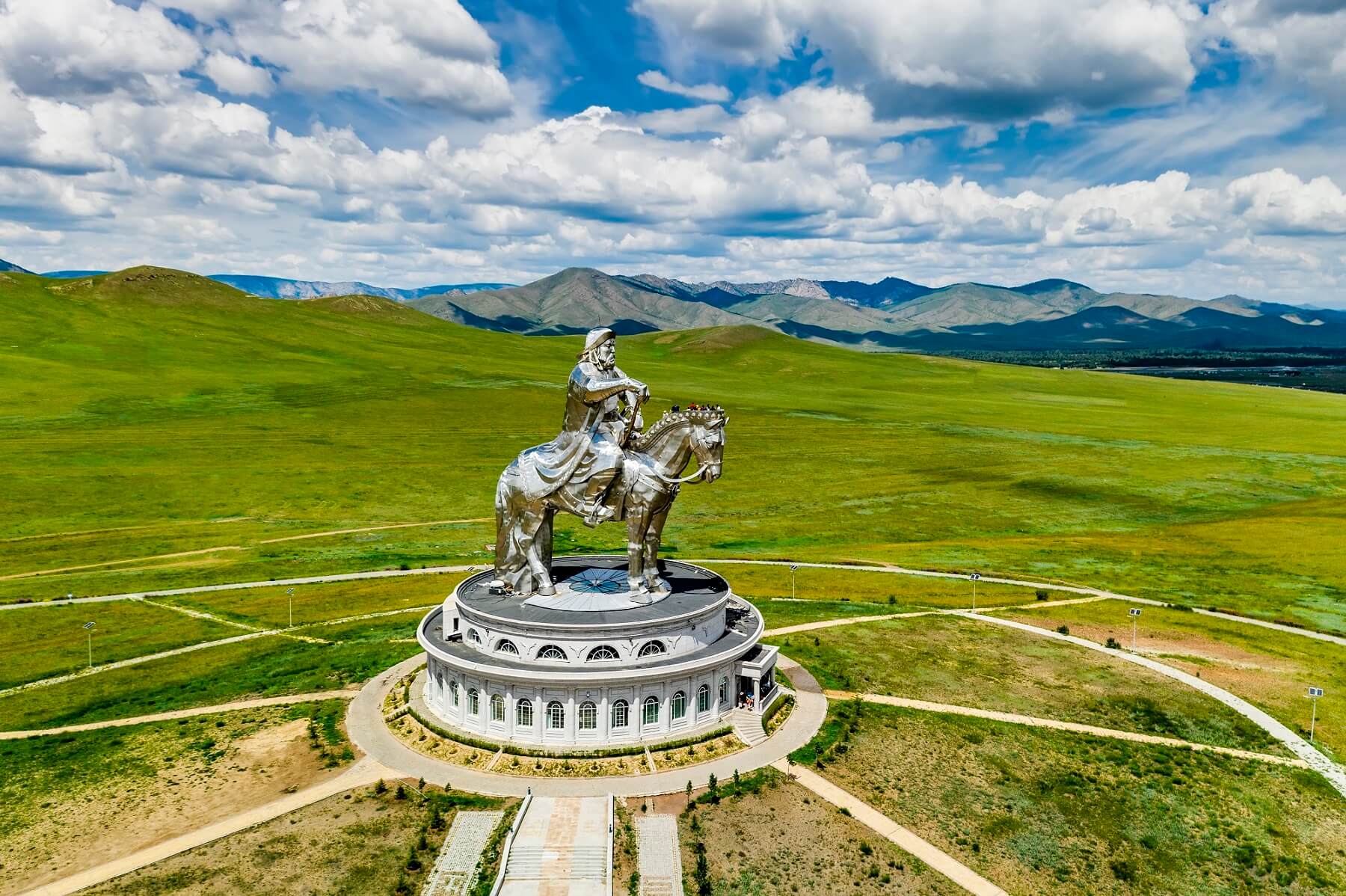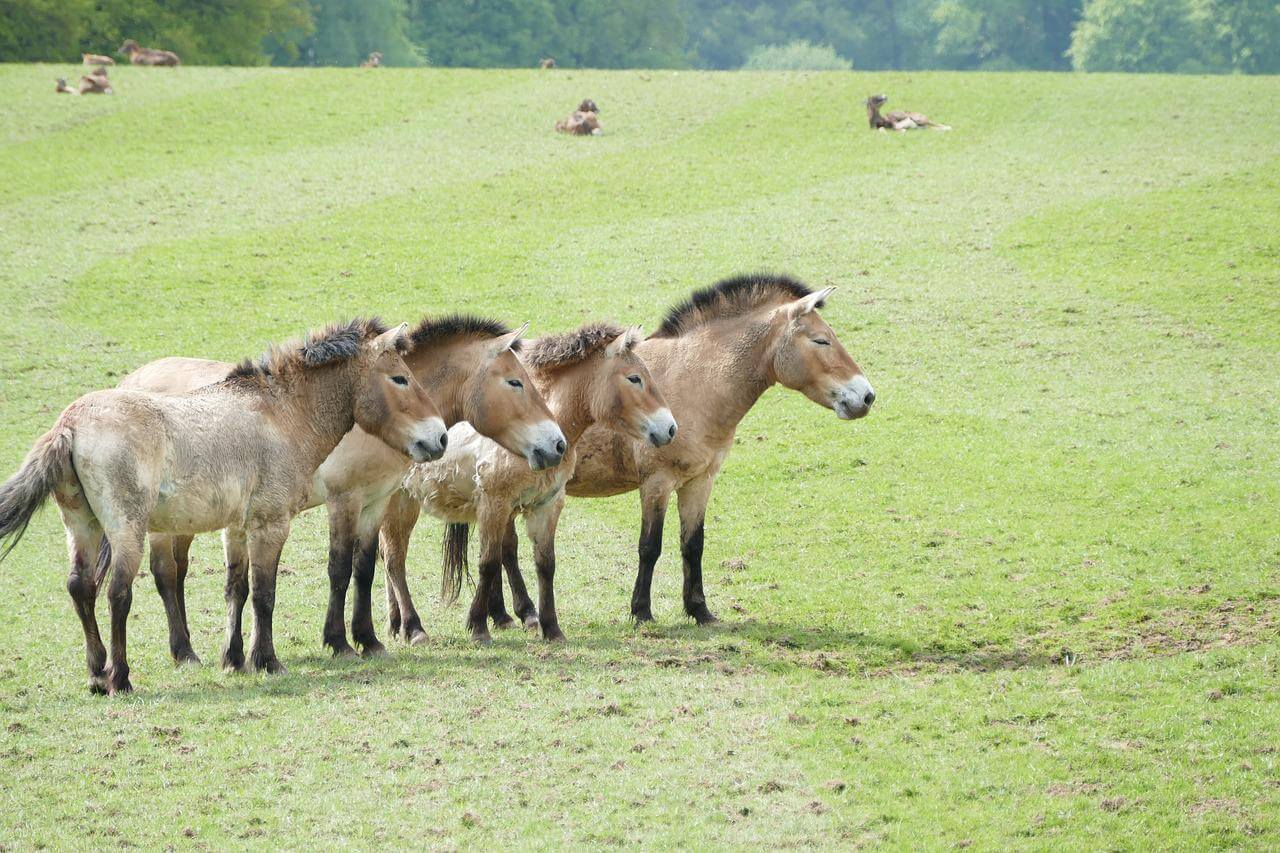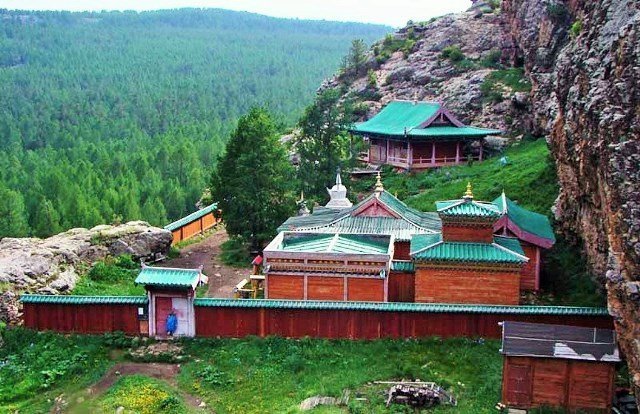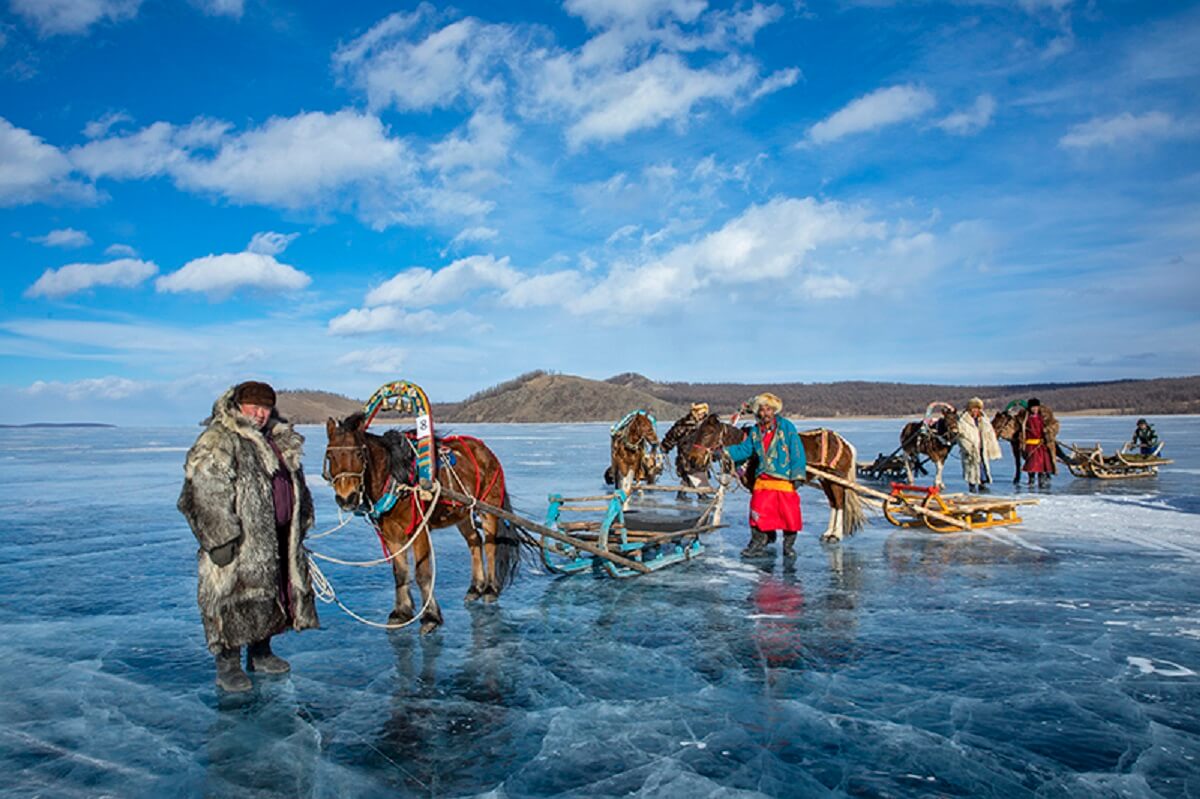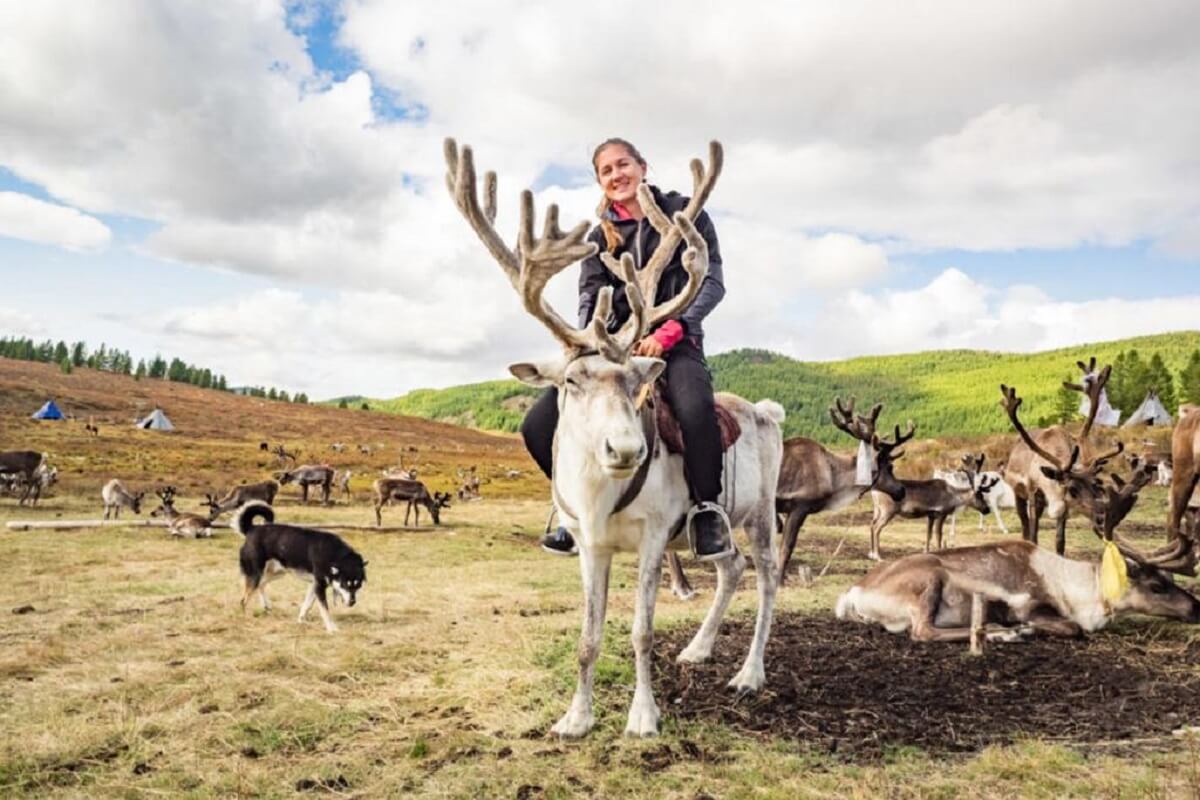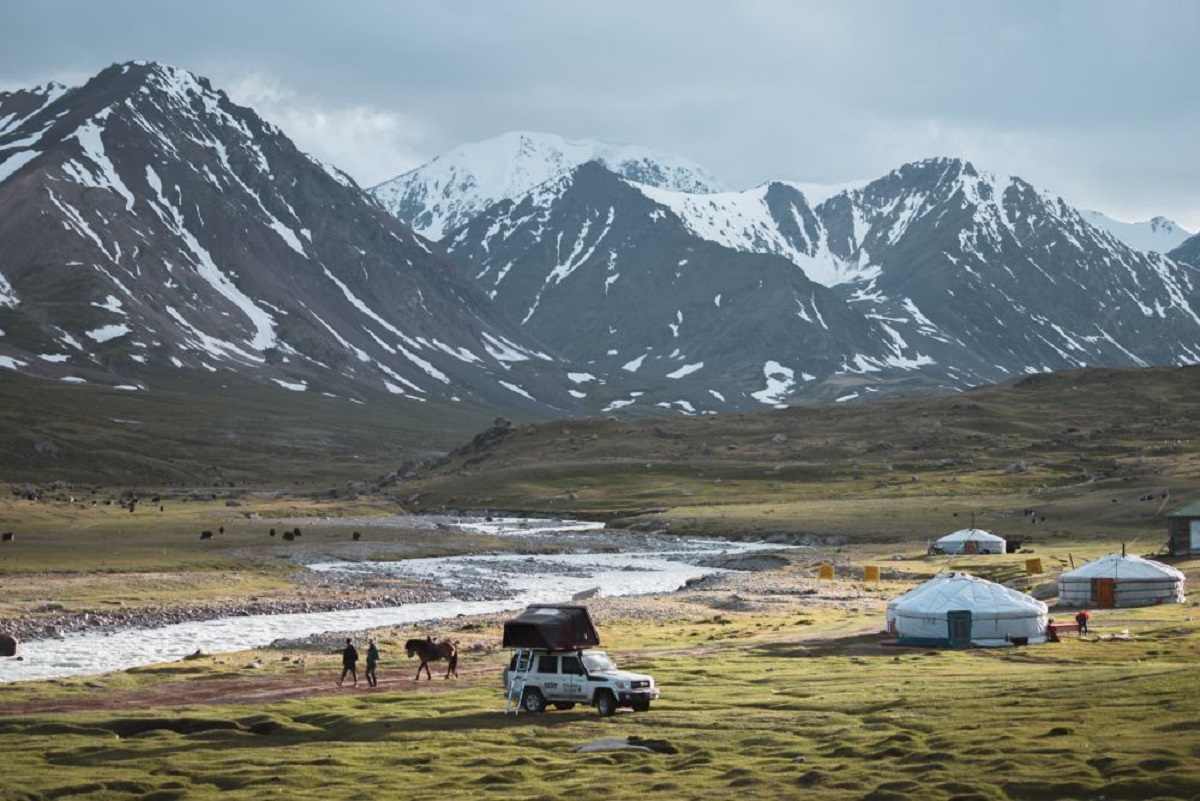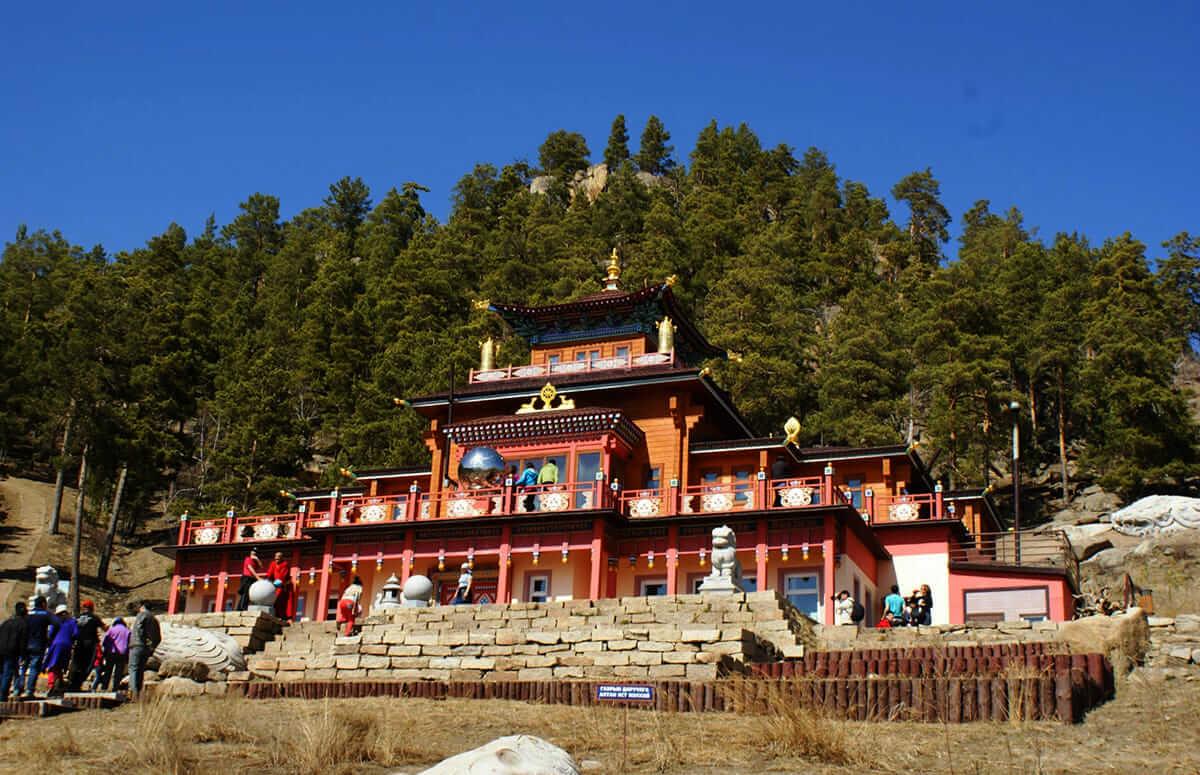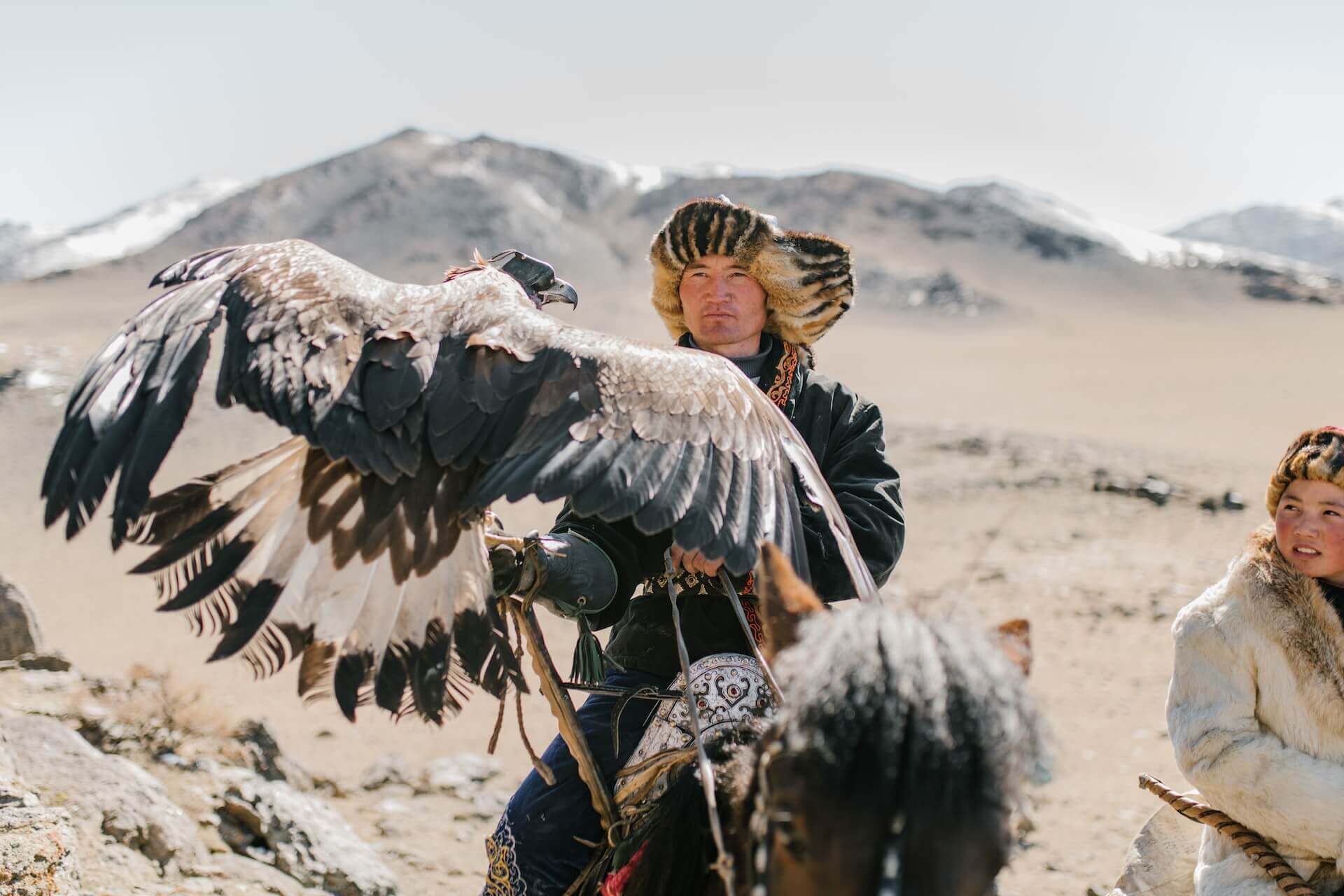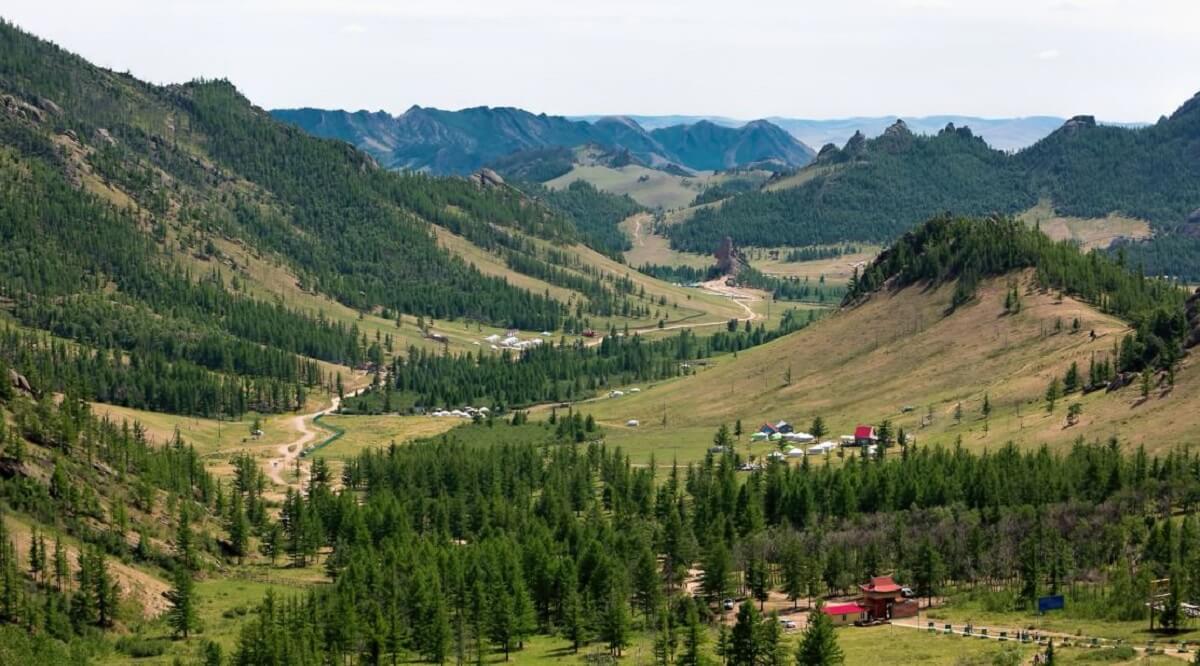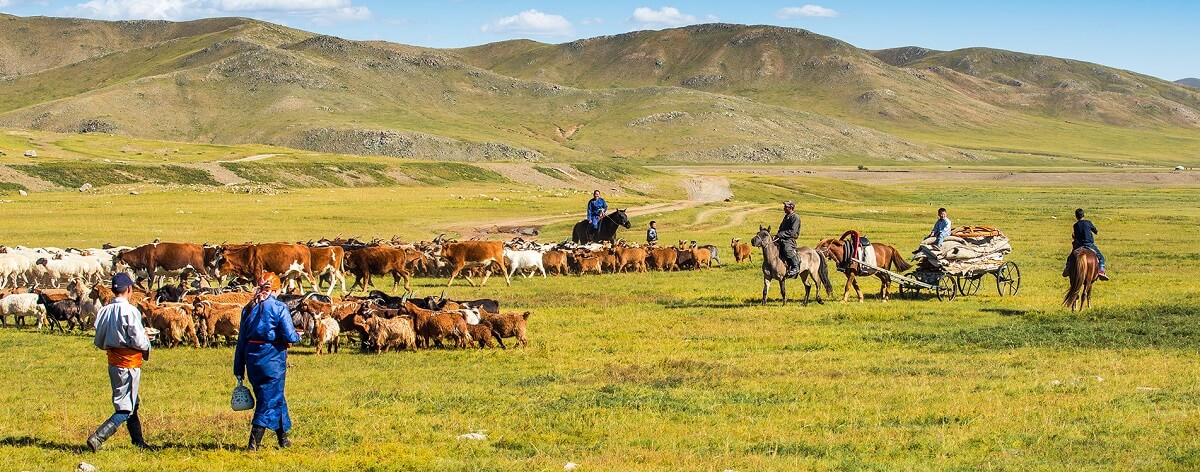Manzushir Monastery, known in Mongolian as Манзушир хийд, stands as a testament to Mongolia’s rich Buddhist heritage and spiritual history. Nestled in the Bogd Khan Mountain National Park, approximately 45 kilometers south of Ulaanbaatar, the monastery was once a thriving center of religious and cultural activity, continuing to attract visitors with its historical significance and picturesque setting. The monastery is easily accessible by car, and there is a small shop nearby offering drinks, snacks, and souvenirs..
Introduction to the Monastery Complex
Manzushir Monastery is a historic monastery complex located in the beautiful Bogd Khan Uul Strictly Protected Area, near the town of Zuunmod, Mongolia. Established in 1733 as the permanent residence of the Reincarnation of the Bodhisattva of Wisdom, the complex played a significant role in Mongolia’s religious and cultural heritage.
The monastery complex features a harmonious blend of Chinese, Mongol, and Tibetan architectural influences, with several temples, buildings, and rock paintings that showcase the country’s rich history and traditions. Visitors can explore the restored temple, which now houses a museum, and see the valuable Buddhist scriptures and artifacts that are on display.
The museum offers a fascinating glimpse into the past, with exhibits that include ancient manuscripts, religious artifacts, and intricate carvings that reflect the monastery’s spiritual and cultural significance.
Historical Background
The Manzushir Monastery was established in 1733 during the Qing Dynasty by the High Saint Luvsanchultemjigmed. Named after the Bodhisattva Manjushri, the deity associated with wisdom, the monastery served as a crucial spiritual and educational hub.
At its peak, Manzushir was home to over 20 temples, nearly 300 monks, and even a few cows, making it one of the largest and most important monasteries in Mongolia.
The monastery thrived for nearly two centuries, playing a significant role in the dissemination of Buddhist teachings and serving as a center for religious ceremonies, festivals, and scholarly activities.
Monks at Manzushir engaged in various religious practices, including meditation, rituals, and the creation of sacred texts and artworks.
The monastery’s prosperity came to a tragic end during the Stalinist purges, which led to its destruction and the loss of many lives. However, the site now offers hope through the restoration of the temple and the museum’s efforts in preserving and narrating its history of resilience and renewal.
Location and Geography
The Manzushir Monastery is situated in a picturesque valley surrounded by hills and mountains, approximately 8 kilometers north of Zuunmod town.
Nestled on the south slope of the Bogd Khan Uul mountain, the monastery is located within a protected area that is home to a diverse array of flora and fauna.
The area is perfect for hiking and exploring, with several trails that lead to the top of the mountain, offering breathtaking views of the surrounding landscape. The proximity to Ulaanbaatar makes it an ideal day trip destination for those interested in history, culture, and nature.
The serene environment, with its lush forests and meadows, provides a tranquil setting for visitors to reflect on the monastery’s historical and spiritual legacy.
Architectural Significance of the Monastery Complex
The architecture of Manzushir Monastery reflected traditional Mongolian and Tibetan Buddhist styles, particularly on the south side . The complex included a main temple, several smaller temples, stupas, and other structures.
The main temple, known for its intricate woodwork and vibrant murals, housed statues of Buddha and various Bodhisattvas, as well as an extensive collection of religious texts. The remnants of the monastery, including the togchin temple ruins, include crumbling walls that evoke its tragic past during the Soviet Era, highlighting the architectural beauty it once possessed.
Nearby, ancient rocks carved with Tibetan script and paintings of the Buddha add to the historical and cultural significance of the site. These carvings serve as a reminder of the monastery’s religious importance and the rich heritage of the area.
The monastery’s buildings were constructed from locally sourced materials, including wood and stone, and featured ornate decorations and symbols representing Buddhist cosmology and philosophy.
The serene mountain setting further enhanced the spiritual ambiance of the site, with the surrounding forest and meadows providing a tranquil backdrop for meditation and contemplation.
Bogd Khan and the Monastery
The Bogd Khan, Mongolia’s revered religious leader, played a pivotal role in the establishment and development of the Manzushir Monastery. Built as a residence for the Reincarnation of the Bodhisattva of Wisdom, the monastery became an important center for religious ceremonies and worship.
The Bogd Khan often visited the monastery, seeking refuge and spiritual solace during times of turmoil. The main temple, known as the Togchin Temple, was built in 1749 and featured impressive rock paintings and carvings that depicted various aspects of Buddhist teachings.
Although the temple was destroyed during the communist purge, its ruins remain an integral part of the monastery complex, serving as a poignant reminder of the site’s historical and spiritual significance.
Destruction and Decline during the Communist Purge
The fate of Manzushir Monastery took a tragic turn in the 1930s during the anti-religious purges orchestrated by the Communist regime. In 1937, the monastery was largely destroyed, its temples razed, and many of its treasures lost or looted.
Ongoing restoration efforts aim to preserve the monastery’s historical and cultural significance, highlighting the importance of rebuilding and rehabilitating this cultural landmark.
The monks were persecuted, with many being executed or imprisoned. This marked a dark period in Mongolia’s history, as numerous monasteries across the country faced similar destruction.
Preservation Efforts
After the communist purge, the Manzushir Monastery was left in ruins, and many of its valuable artifacts and scriptures were destroyed or lost. However, in recent years, dedicated efforts have been made to preserve and restore the monastery complex.
The restored temple, which now houses a museum and once provided food for monks , stands as a testament to these efforts, providing a glimpse into the monastery’s rich history and cultural significance.
The museum features a collection of artifacts, including a giant cauldron, statues, and rare Buddhist scriptures, offering visitors a deeper understanding of the monastery’s past.
Preservation efforts have also focused on protecting the natural environment of the monastery, which is home to a variety of wildlife, including marmots, horses, and cows. These efforts ensure that the legacy of Manzushir Monastery continues to inspire and educate future generations.
Tourism
Despite its destruction, the site of Manzushir Monastery remains a place of historical and cultural importance. In recent decades, efforts have been made to preserve and restore parts of the complex. The artistic and cultural significance of the paintings found at the monastery adds to its rich heritage.
A small museum now stands on the site, housing artifacts recovered from the ruins and providing visitors with insights into the monastery’s past. The hillside surrounding the monastery is home to wildlife such as marmots and diverse flora, enhancing the natural beauty of the area.
Today, Manzushir Monastery is a popular destination for both locals and tourists. The picturesque location offers opportunities for hiking, picnicking, and exploring the natural beauty of Bogd Khan Mountain.
The granite rocks and ancient cave paintings scattered throughout the area add to the site’s historical allure. While navigating the landscape, visitors will encounter various bridges, some of which are crucial for accessing different parts of the terrain.
The remains of the monastery, including the foundations of the main temple and several smaller structures, evoke a sense of the site’s former glory and its spiritual significance. Unique artifacts made from human skulls can be found in the museum, highlighting the cultural and historical depth of the monastery.
Visitors to Manzushir can also see the large bronze cauldron used for cooking meals for the monks, as well as several stone inscriptions and carvings. The entrance gates mark the transition from the surrounding landscape to the temple complex, setting the stage for the visitor experience.
The site is particularly vibrant during the annual Naadam festival, when Mongolian traditional games, music, and dance bring the area to life, celebrating the country’s rich cultural heritage. During the summer months, the weather can be unpredictable, so preparation for hiking is essential.
The historical significance of the large bronze cauldron, which was used for cooking food, is a notable aspect of the monastery’s past. Various paths and trails lead to the monastery, offering scenic views and opportunities to encounter local wildlife. The drive from Ulaanbaatar to the monastery takes about an hour, making it a manageable day trip.
The grassy steppe and grasslands surrounding the monastery contribute to the area’s natural beauty and provide a habitat for local wildlife. Hiring a taxi for the trip is a convenient option for visitors. Historically, the large bronze cauldron was capable of cooking up to ten sheep at a time, underscoring its importance in feeding monks and pilgrims.
The various buildings within the monastery complex, including the main building now serving as a museum, highlight the architectural significance of the site. Leaving the scenic areas and returning to the car park marks the end of a memorable visit.
Directional cues relevant to hiking trails and landmarks to the west are important for navigation. Taking photos to capture the stunning scenery and historical artifacts is a significant part of the visitor experience. The various walking experiences and scenic trails offer immersive exploration of the landscape.
The proximity of the new airport to the town of Zuun Mod enhances accessibility for visitors. The various attractions surrounding the monastery, including scenic views and local museums, contribute to the overall appeal of the area as a destination.
Cultural Significance
The Manzushir Monastery is a culturally significant site that showcases Mongolia’s rich history and traditions.
The monastery complex features a mix of architectural styles, including Chinese, Mongol, and Tibetan influences, and its rock paintings and carvings are some of the finest examples of Buddhist art in the country.
The monastery’s history is closely tied to Mongolia’s religious and cultural heritage, playing a crucial role in the development of Buddhism in the region. Visitors can explore the monastery’s ruins, visit the restored temple, and see the valuable artifacts and scriptures that are on display.
The monastery is also a popular destination for hiking and trekking, with several trails leading to the top of the Bogd Khan Uul mountain, offering breathtaking views of the surrounding landscape.
Overall, the Manzushir Monastery is an important cultural and historical site that provides a unique glimpse into Mongolia’s rich heritage, inviting visitors to reflect on the profound spiritual traditions that have shaped the nation’s identity.
Spiritual Legacy
While Manzushir Monastery no longer functions as a center for Buddhist practice, its legacy endures. Initially built in 1773 as a place for a Bodhisattva of wisdom, the site serves as a poignant reminder of Mongolia’s spiritual heritage and the resilience of its culture.
The stories of the monks who lived and studied there, the artistry of the temple decorations, and the natural beauty of the surroundings continue to inspire visitors.
Manzushir Monastery stands as a symbol of the enduring spirit of Mongolian Buddhism, a place where history, culture, and nature converge. It offers a glimpse into the past while inviting reflection on the profound spiritual traditions that have shaped Mongolia’s identity.
Through preservation efforts and the continued interest of visitors, the legacy of Manzushir Monastery remains alive, echoing the wisdom and teachings of its namesake, the Bodhisattva Manjushri.


